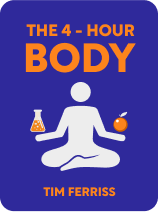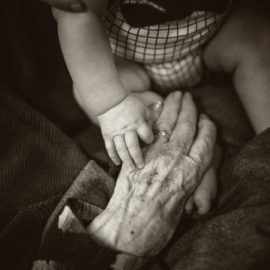

This article is an excerpt from the Shortform book guide to "The 4-Hour Body" by Timothy Ferriss. Shortform has the world's best summaries and analyses of books you should be reading.
Like this article? Sign up for a free trial here .
Do you have an injury in need of treatment? What are the options for injury treatments?
Tim Ferriss has experienced a number of injuries and explored potential injury treatments in The 4-Hour Body. Not all injury treatments work as well as others.
Keep reading for 6 options for injury treatments and what you need to know about them.
Injury Treatments: Options
The injury treatments below apply to a variety of aches and pains. When seeking a particular treatment, make sure to find a good practitioner. Bad practitioners can create new problems or give good treatments a bad vibe (for example, the author didn’t try the Egoscue method for years because some practitioners marketed in a way that made it appear cult-like).
Treatment #1: Wear Flat Shoes
Wearing shoes with heels forces the body to assume an uncomfortable posture to stay balanced. Bad posture can lead to a host of health problems including, among others, back pain, headaches, and poor circulation. The fix is simple—wear flat shoes most of the time and wear heels only sparingly.
For example, when the author switched to wearing flatter shoes (Vibram Five Fingers and Terra Plana Barefoot Vivo shoes), the low back pain he’d been experiencing for ten years disappeared.
Treatment #2: Egoscue Method
The Egoscue Method is a series of exercises designed to improve posture. To fix bad posture caused by working at a desk, do the following exercises 1-3 times after every 2-3 hours of sitting, and do all six exercises at least once every seven days.
Exercise #1: Static back.
- Lie face up.
- Put both your legs up on something. Your knees should be bent 90 degrees.
- Stretch out your arms, palm up, with your thumbs touching the ground. Your arms should be 45 degrees away from your body.
- Relax. Your lower back should be flat on the floor.
- Stay in this position for five minutes.
Exercise #2: Static extension.
- Get into a crawling position. Your wrists, elbows, and shoulders should be in a line, as should your knees and hips.
- Move your hands six inches in front of you.
- Put your elbows where your hands were.
- Make a thumbs-up shape with your hands and pull your thumbs away from each other.
- Pull your hips towards your feet until your lower back arches.
- Lower your head.
- Stay in this position for 60 seconds.
Exercise #3: Static shoulder bridge.
- Lie face up and bend your knees.
- Put a pillow between your knees and squeeze it.
- Lift your hips and back off the ground, still squeezing the pillow.
- Stay in this position for 60 seconds.
Exercise #4: Active shoulder bridge.
- Follow the first two bullets of the static shoulder bridge.
- Lift your hips and back up and down for 15 reps.
- Do three sets in total.
Exercise #5: Supine groin progressive. (Shortform note: There are two versions of this exercise. One requires specialized equipment, and one can be done at home. We’ve combined the instructions for a more robust at-home version.)
- Create a loop—for example, tie the legs of a pair of sweatpants together—and hang it over a doorknob or chair.
- Lie on your back, face up.
- Put one foot in the loop with your leg straight. Your back should just be starting to arch. Adjust the loop height if necessary.
- Put the other leg up on something. Your knee should be bent at 90 degrees.
- Hold this position until your whole lower back is touching the ground (probably around five minutes).
- Adjust the loop so your leg is a little lower and your back is arching again.
- Hold the position until your back is flat again.
- Adjust approximately every five minutes for 25 minutes.
- Repeat with the other leg.
Exercise #6: Wall sit.
- Stand with your back to a wall.
- Spread your knees and feet hip-width apart. Point your feet straight forward.
- Slide down the wall and move your feet away from it until your thighs are parallel to the floor. Your ankles should be a little forward of your knees, and every part of your lower back should touch the wall.
- Stay in this position for two minutes.
Treatment #3: Advanced Muscle-Integration Therapy (AMIT)
Advanced muscle-integration therapy (AMIT) focuses on the parts of the nervous system that control the firing of muscles.
When a part of the body is overstressed, one of two things happens: The connective tissue or muscle becomes injured, or the nervous system turns off the muscle. The body then uses a different muscle to perform the approximate function of the turned-off muscle. These compensations continue to happen and the body can get to the point where the compensating muscle (and pain) is nowhere near the turned-off muscle. To turn the muscle back on, the practitioner pushes one finger into each end of the turned-off muscle.
For example, when the author saw Dr. Buhler about one of his rotator cuff muscles, it was shut off. Before the session, the author could lift 6 pounds. After, he could lift 28.
If you can’t find an AMIT practitioner (Dr. Buhler is the only one mentioned in the book), you can consider seeing a muscle-activation technique (MAT) practitioner as these are related injury treatments.
Treatment #4: Active-Release Therapy (ART)
Active-release therapy (ART) was invented by a doctor who had a background in engineering and structural mechanics and applied this knowledge to the human body. ART involves shortening a particular tissue, putting tension on it, and then lengthening it to break up scar tissue. Scar tissue limits mobility and can create pain and stiffness. ART works for about 70% of people.
For example, Frank Shamrock, a UFC champion, sought out ART after he hurt his lower back so badly that he couldn’t walk. After 4 ART sessions, all his scar tissue was gone and he was healthy enough to fight three weeks later.
Treatment #5: Biopuncture
Biopuncture consists of shallow injections of diluted substances including lymphomyosot (used for drainage in swollen tissue) and Traumeel (used for inflammation). These injections stimulate the body’s natural healing methods.
For example, after the author’s first treatment of 40-60 injections for his infraspinatus (shoulder) muscles, his pain disappeared.
Treatment #6: Prolotherapy
Prolotherapy is a treatment that involves injecting joints, ligaments, and tendons with irritants such as sugar or salt water. These irritants create inflammation, which stimulates healing (the irritants aren’t very dangerous and the risk of infection from injection is low).
Prolotherapy is most effective on the sacroiliac (lower back), ankle, knee, and elbow joints and is low-risk. For example, after the author’s first session, which included 12 injections, pain caused by sports injuries in his right wrist and left knee disappeared.
Choosing Among Treatments
You should always try injury treatments in the following order, and only move onto the next step if the previous stages don’t work:
- Adjust your biomechanics and posture.
- For example, if you have knee pain, the first step is to make sure your knees are in the proper position when you use them.
- Use manual therapy or tool-assisted therapy.
- For example, see a massage therapist.
- Use drugs.
- For example, get an injection of painkillers.
- Get surgery.

———End of Preview———
Like what you just read? Read the rest of the world's best book summary and analysis of Timothy Ferriss's "The 4-Hour Body" at Shortform .
Here's what you'll find in our full The 4-Hour Body summary :
- How to do the least amount you need to do for the results you want
- Why you need a cheat day in your diet
- How to improve everything about your body, including sleep, sex, and longevity






